Outdoor wall lights are essential for adding functionality, safety, and charm to any outdoor space. Whether you’re looking to create a welcoming ambiance, highlight architectural features, or enhance security, choosing the right type of outdoor wall light can make all the difference. This guide explores the most popular types of outdoor wall lights, their features, how they work, and tips for selecting the best options for your needs.
Why Choosing the Right Wall Light Matters
The perfect outdoor wall light not only meets practical needs but also complements your home’s aesthetic. Poorly chosen lighting can result in inefficiencies, higher energy costs, or a style clash. Thoughtful lighting enhances curb appeal, improves safety, and contributes to eco-friendliness with modern energy-saving technologies like solar and LED lighting.
1. How Do Outdoor Wall Lights Work?
Outdoor wall lights operate via three primary power sources: mains electricity, solar energy, and batteries. Here’s how each works:
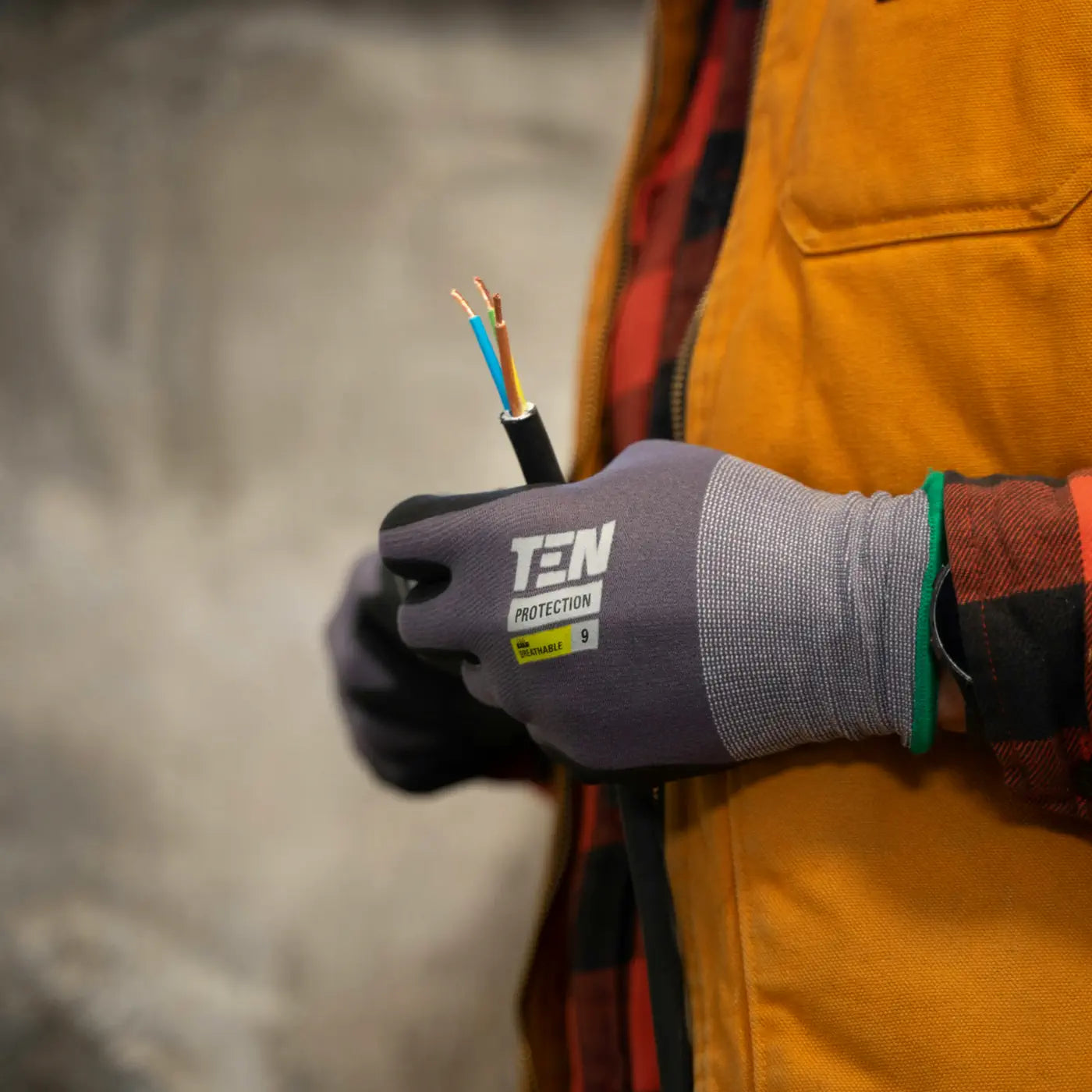
Mains Powered Lights
These are wired into your home’s electrical system, providing consistent and bright illumination. While they offer reliability, installation requires professional expertise due to wiring and safety regulations.

Solar Powered Lights
These lights utilise photovoltaic cells to convert sunlight into electricity, which charges an internal battery. At dusk, the stored energy powers LED bulbs, providing eco-friendly illumination without ongoing electricity costs.
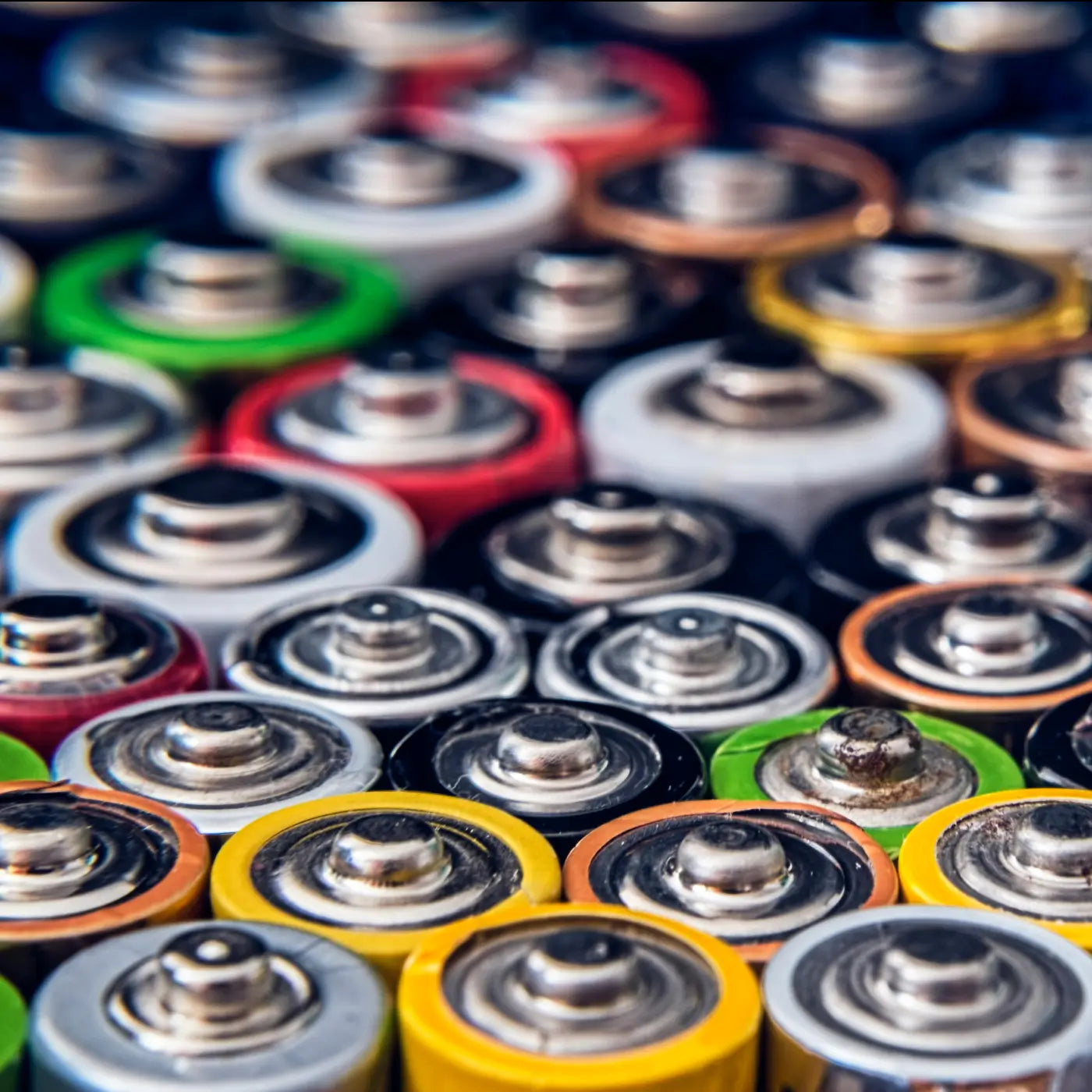
Battery Powered Lights
Battery-powered lights are portable and easy to install. They’re best suited for areas needing temporary or low-level lighting, though frequent battery replacements may be required.
Lighting control can vary, including manual switches, timers, motion sensors, or even smart technology, which allows you to operate lights via an app or voice commands. Smart systems often integrate with home automation for advanced scheduling and remote control.
2. Overview of Types of Outdoor Wall Lights
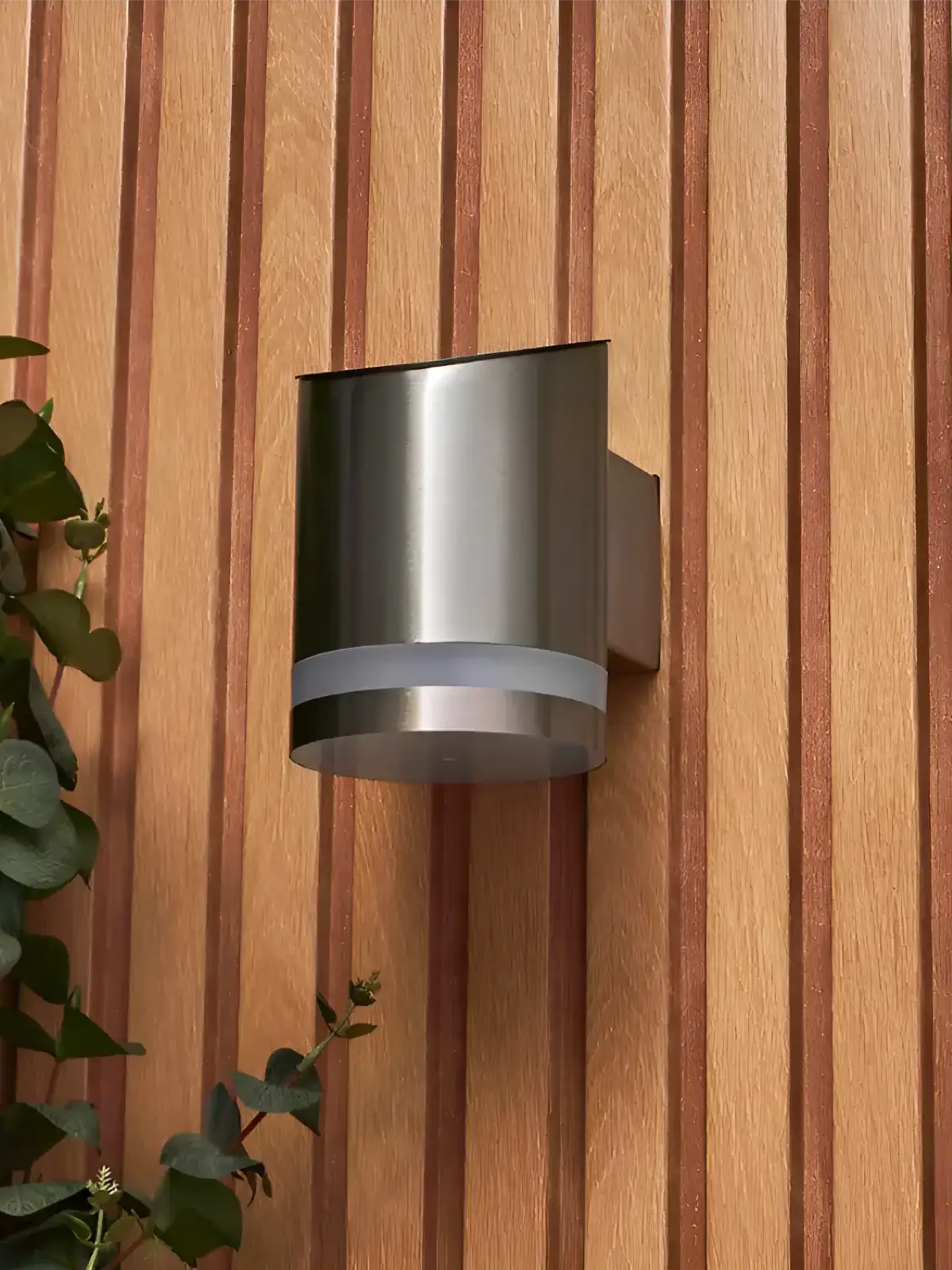
- Features: Solar wall lights are entirely wire-free and powered by renewable energy, making them a top choice for sustainability-conscious homeowners.
- How They Work: These lights use photovoltaic cells to capture sunlight, charging a built-in battery that powers LEDs at night. Many models include dusk-to-dawn sensors for automatic operation.
- Advantages: Cost-effective, easy to install, and eco-friendly. They eliminate electricity costs and require minimal maintenance.
- Ideal For: Gardens, patios, or areas where wiring is challenging.
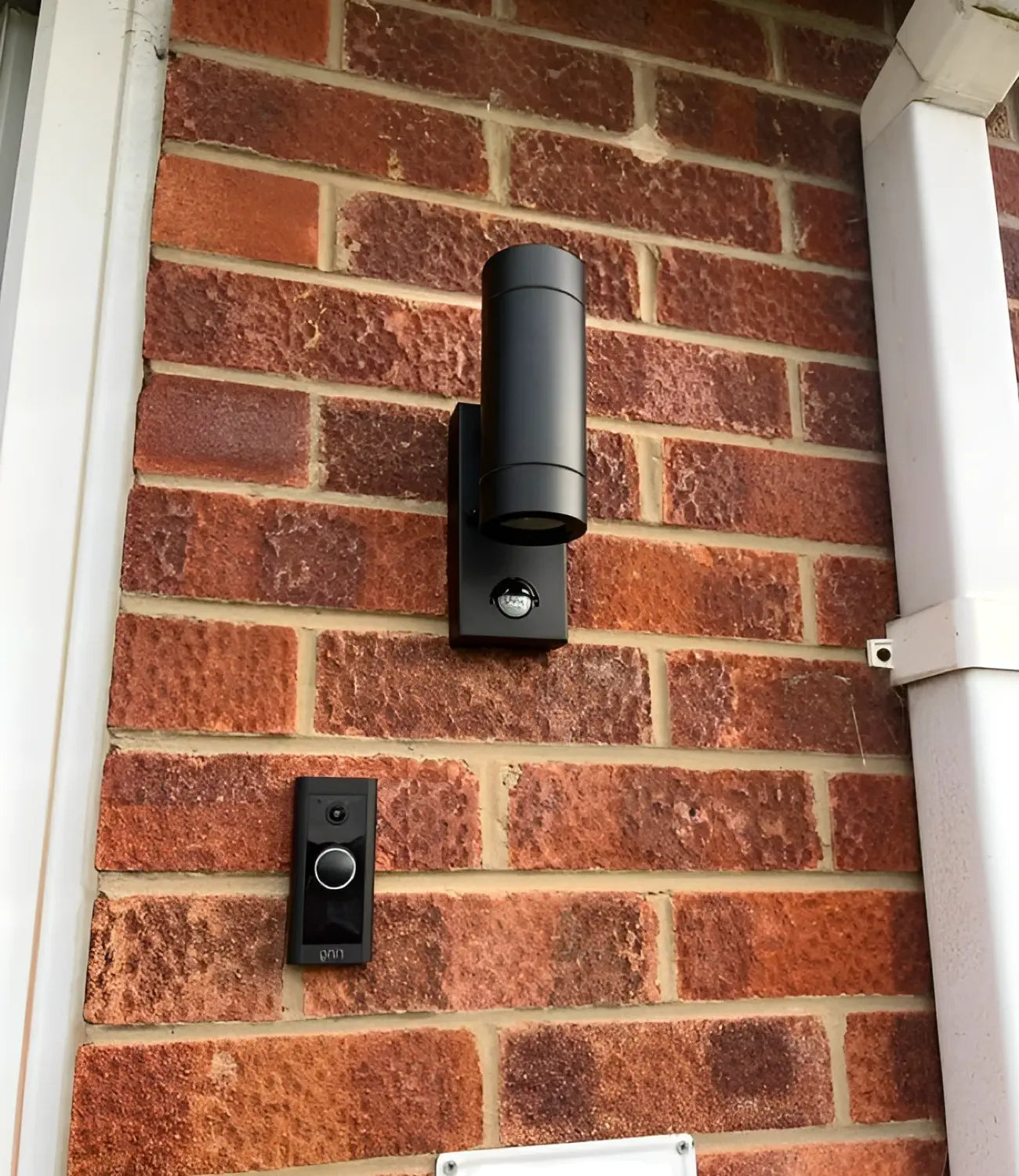
- Features: Equipped with motion or PIR (passive infrared) sensors that detect heat or movement to activate lighting.
- How They Work: When movement or heat is detected, the sensor triggers the light, which then switches off after a preset duration.
- Advantages: Provides targeted lighting for security or utility while conserving energy.
- Ideal For: Entryways, driveways, and pathways where safety and security are priorities.
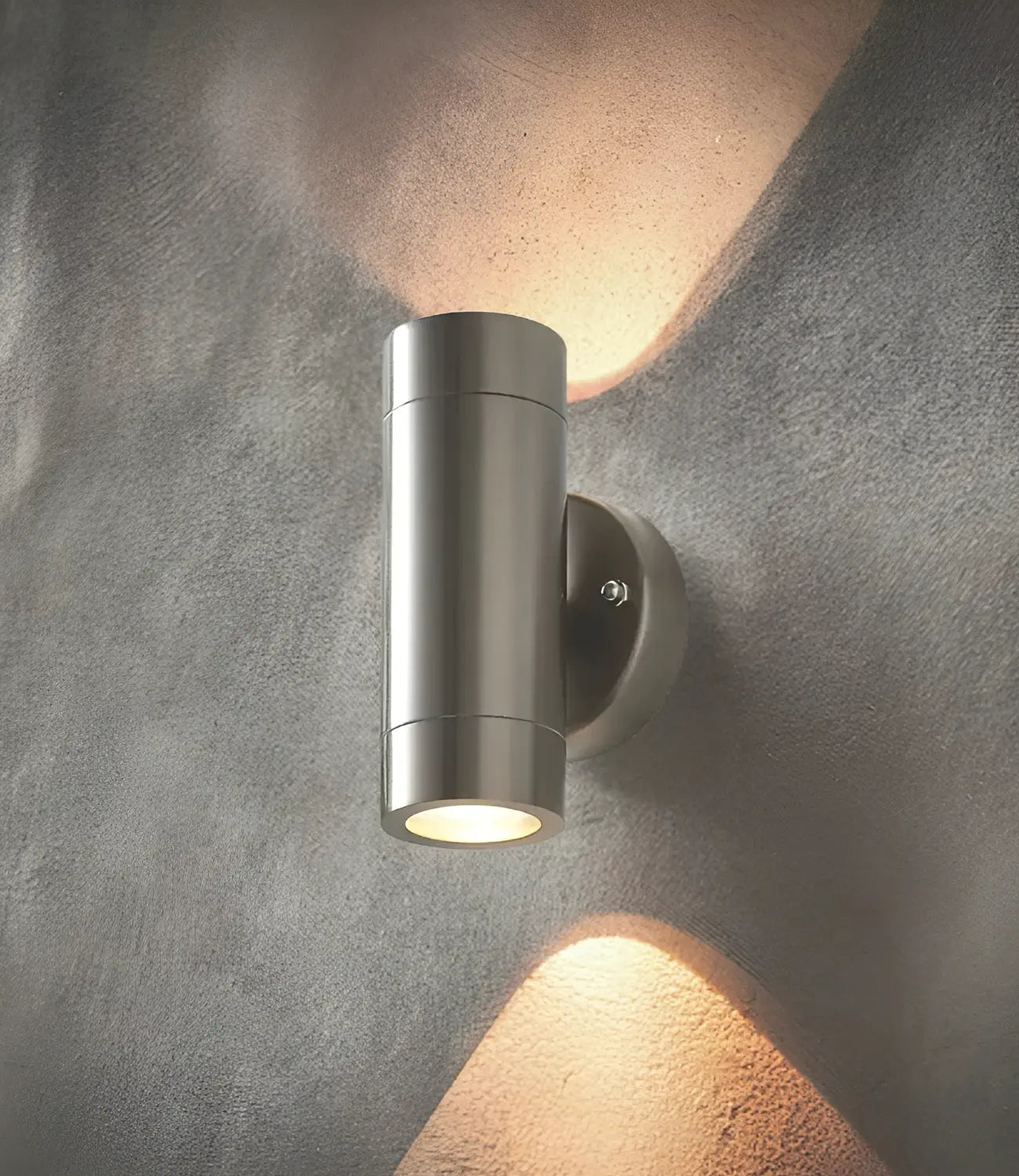
- Features: These lights allow for adjustable focus, directing beams onto specific areas or objects.
- How They Work: Often mains-powered, spotlights can be adjusted manually or remotely to highlight architectural features, plants, or art.
- Advantages: Enhances visual interest and highlights key outdoor features.
- Ideal For: Gardens, sculptures, or building facades.
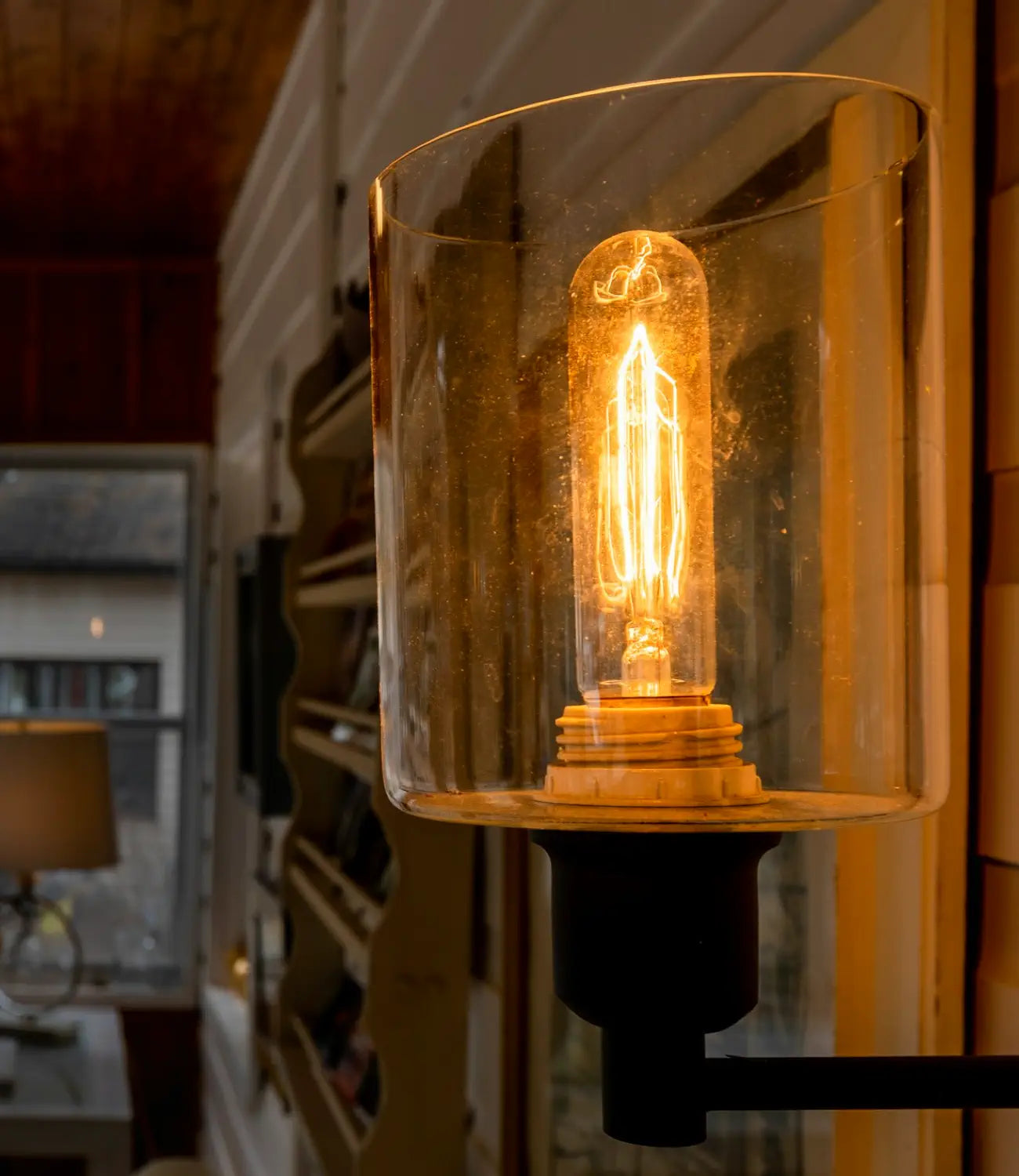
- Features: A versatile category, porch lights range from traditional lantern designs to sleek modern fixtures.
- How They Work: Typically mains-powered, some models also include motion sensors or smart features for added convenience.
- Advantages: Enhances curb appeal and creates a welcoming entrance.
- Ideal For: Front doors, porches, and sheltered patios.
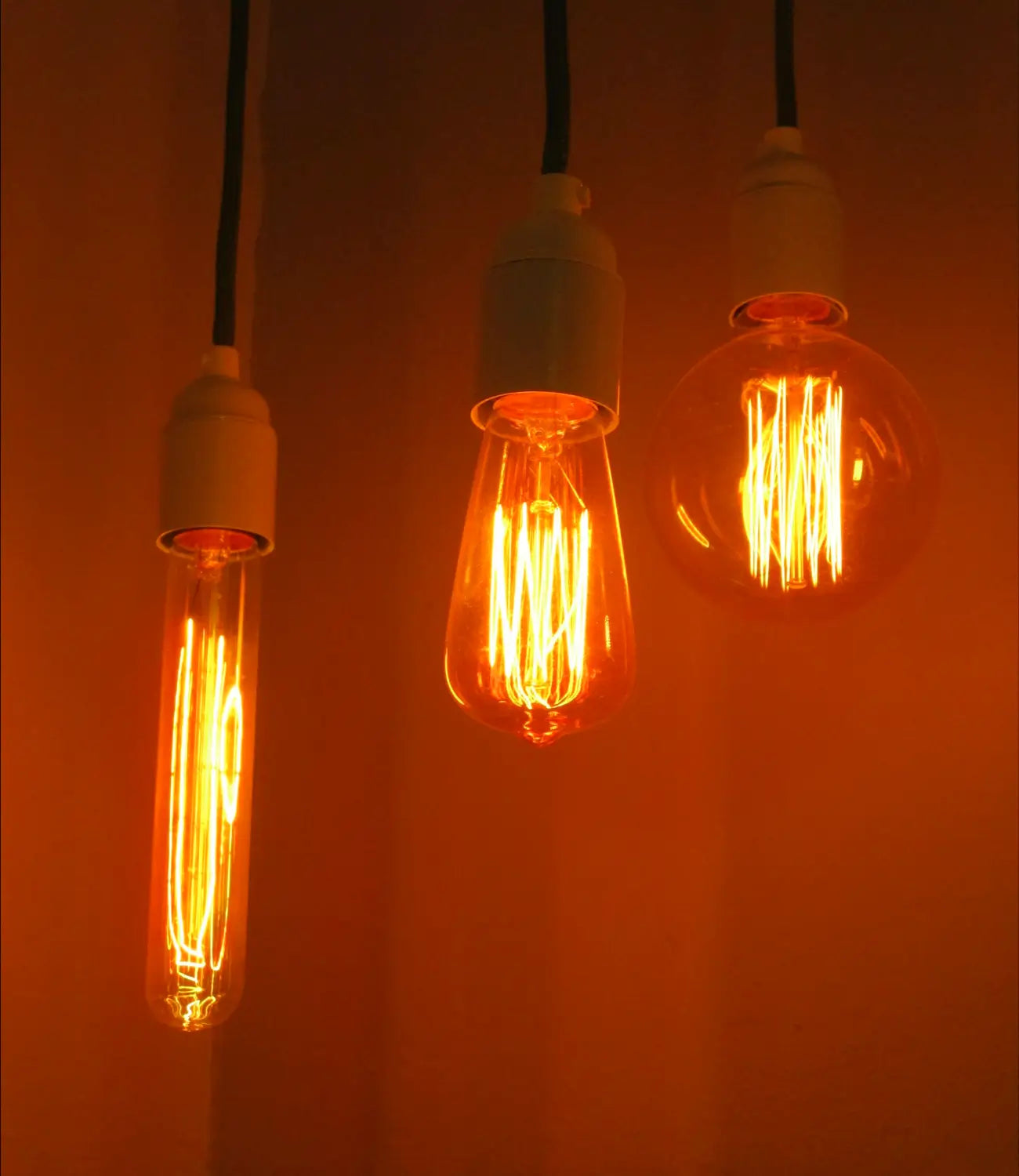
- Features: Pathway lights are low-level fixtures that illuminate walkways, while string lights offer decorative flair for outdoor areas.
- How They Work: Solar-powered pathway lights charge during the day, while string lights are often battery-operated or solar-powered for easy installation.
- Advantages: Add ambiance and improve nighttime visibility.
- Ideal For: Walkways, pergolas, and outdoor dining areas.
- Features: Solar wall lights are entirely wire-free and powered by renewable energy, making them a top choice for sustainability-conscious homeowners.
- How They Work: These lights use photovoltaic cells to capture sunlight, charging a built-in battery that powers LEDs at night. Many models include dusk-to-dawn sensors for automatic operation.
- Advantages: Cost-effective, easy to install, and eco-friendly. They eliminate electricity costs and require minimal maintenance.
- Ideal For: Gardens, patios, or areas where wiring is challenging.
- Features: Equipped with motion or PIR (passive infrared) sensors that detect heat or movement to activate lighting.
- How They Work: When movement or heat is detected, the sensor triggers the light, which then switches off after a preset duration.
- Advantages: Provides targeted lighting for security or utility while conserving energy.
- Ideal For: Entryways, driveways, and pathways where safety and security are priorities.
- Features: These lights allow for adjustable focus, directing beams onto specific areas or objects.
- How They Work: Often mains-powered, spotlights can be adjusted manually or remotely to highlight architectural features, plants, or art.
- Advantages: Enhances visual interest and highlights key outdoor features.
- Ideal For: Gardens, sculptures, or building facades.
- Features: A versatile category, porch lights range from traditional lantern designs to sleek modern fixtures.
- How They Work: Typically mains-powered, some models also include motion sensors or smart features for added convenience.
- Advantages: Enhances curb appeal and creates a welcoming entrance.
- Ideal For: Front doors, porches, and sheltered patios.
- Features: Pathway lights are low-level fixtures that illuminate walkways, while string lights offer decorative flair for outdoor areas.
- How They Work: Solar-powered pathway lights charge during the day, while string lights are often battery-operated or solar-powered for easy installation.
- Advantages: Add ambiance and improve nighttime visibility.
- Ideal For: Walkways, pergolas, and outdoor dining areas.





...and When to Use Each Type
Solar Lights
- Best For: Eco-friendly illumination in gardens, patios, or remote areas.
- Installation Tip: Position in direct sunlight for optimal charging efficiency.
Sensor Lights
- Best For: Security-focused areas like driveways and entryways.
- Installation Tip: Mount at a height of 6–10 feet for optimal motion detection.
Spot Lights
- Best For: Highlighting outdoor features such as fountains or trees.
- Installation Tip: Use narrow beams for precision lighting effects.
Porch Lights
- Best For: Enhancing the aesthetics of entryways and porches.
- Installation Tip: Choose designs that complement your home’s style, from rustic to modern.
Pathway and String Lights
- Best For: Adding ambiance to social spaces or lighting garden paths.
- Installation Tip: Use multiple lights for uniform coverage along pathways.
- Best For: Eco-friendly illumination in gardens, patios, or remote areas.
- Installation Tip: Position in direct sunlight for optimal charging efficiency.
- Best For: Security-focused areas like driveways and entryways.
- Installation Tip: Mount at a height of 6–10 feet for optimal motion detection.
- Best For: Highlighting outdoor features such as fountains or trees.
- Installation Tip: Use narrow beams for precision lighting effects.
- Best For: Enhancing the aesthetics of entryways and porches.
- Installation Tip: Choose designs that complement your home’s style, from rustic to modern.
- Best For: Adding ambiance to social spaces or lighting garden paths.
- Installation Tip: Use multiple lights for uniform coverage along pathways.
3. Key Considerations When Choosing Outdoor Wall Lights
It’s essential to consider various factors before choosing a lighting style. Here are the key ones we believe matter most.

IP Ratings
Ensure lights meet IP44 or higher for resistance to water and dust, especially in exposed areas.
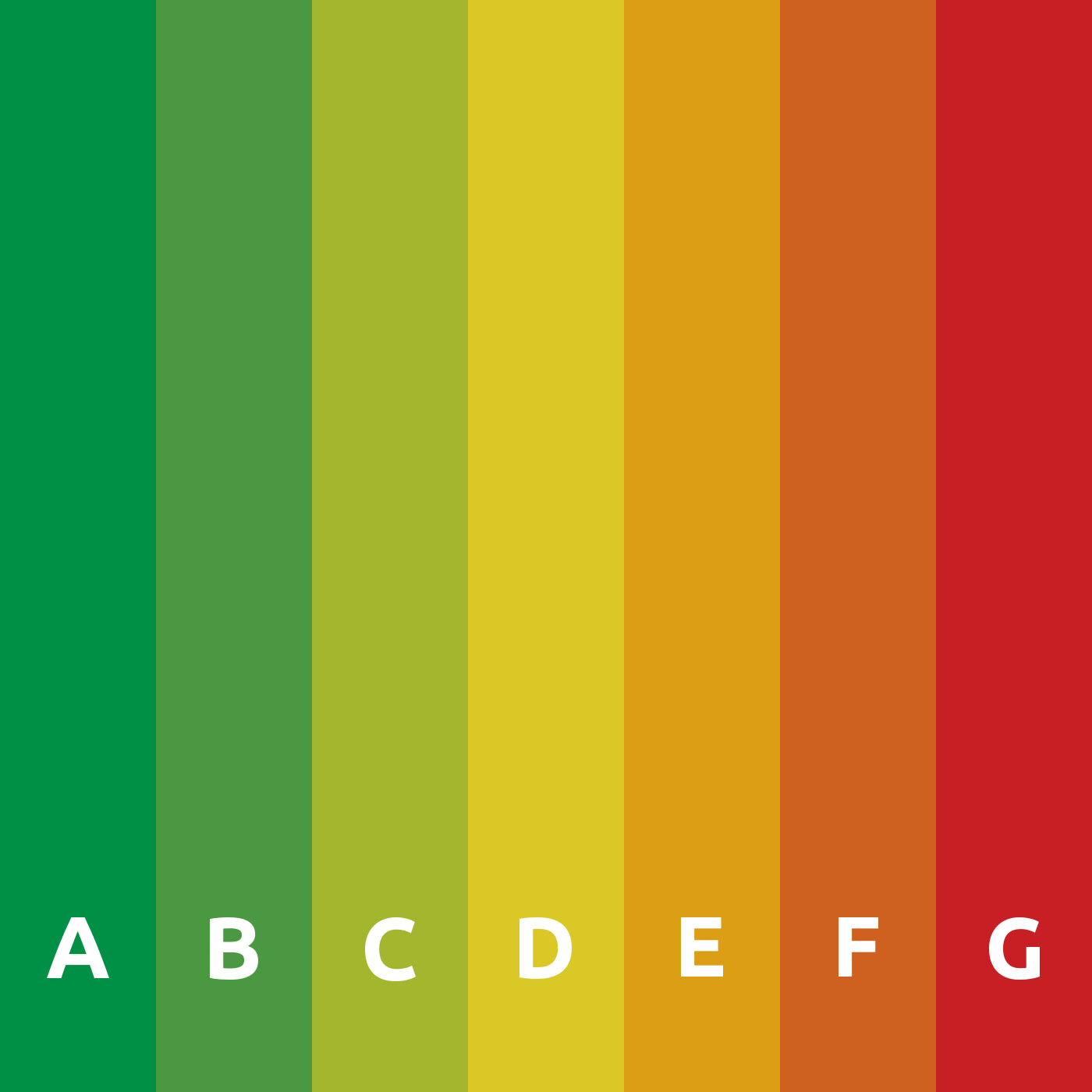
Energy Efficiency
Opt for LED bulbs, which consume up to 90% less energy than traditional bulbs.

Direct Sunlight
If you’re choosing solar lights, ensure the area you want to illuminate receives at least 6 hours of sunlight daily.
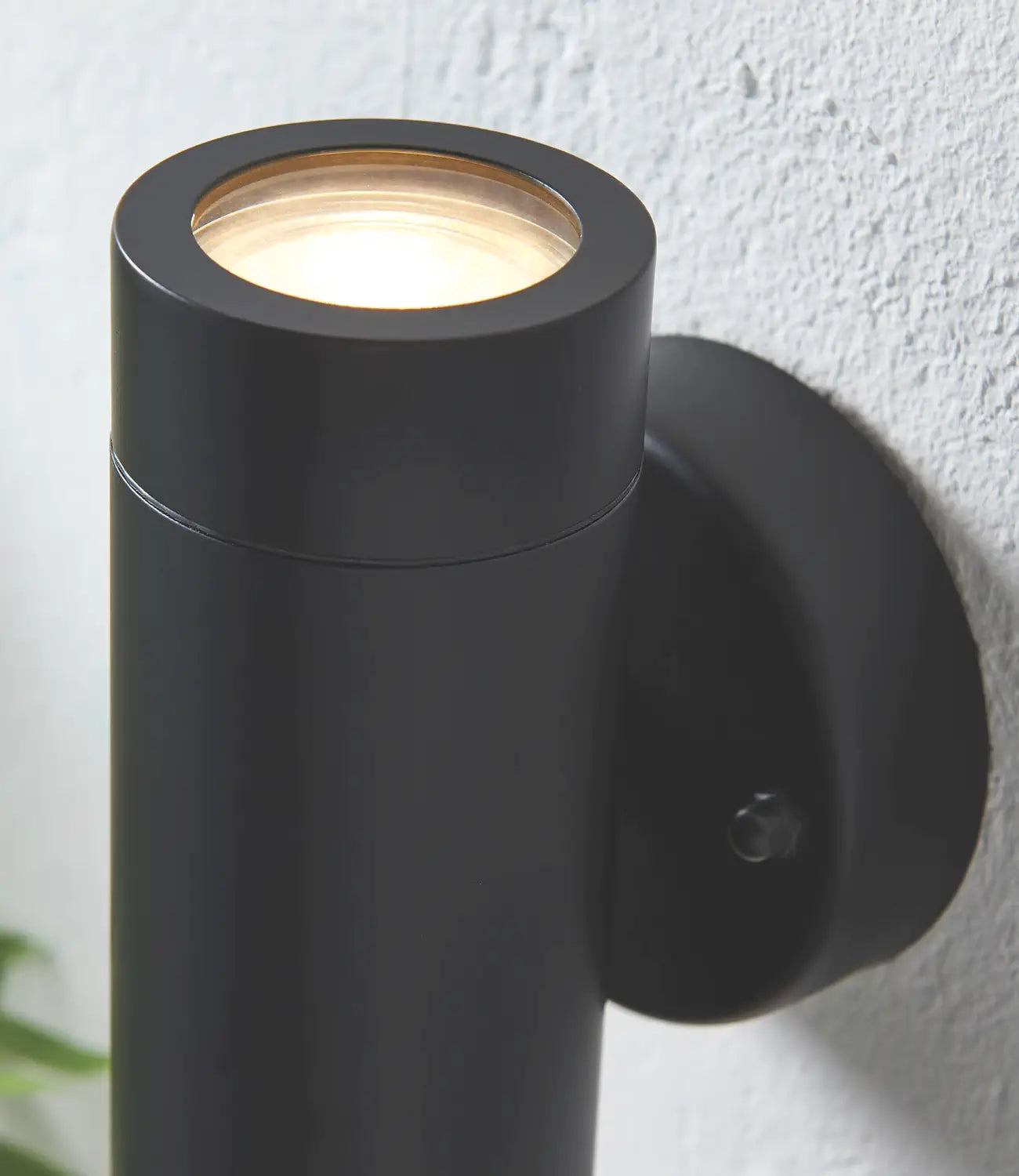
Style and Material
Match fixtures to your property’s aesthetic, using durable materials like stainless steel or weather-resistant plastics.
4. Sconces vs. Wall Lights: What’s the Difference?
Many people use the terms "sconces" and "wall lights" interchangeably, but there are subtle distinctions.
Both are excellent for outdoor use, but sconces are ideal for creating ambiance, while wall lights often focus on function and illumination.
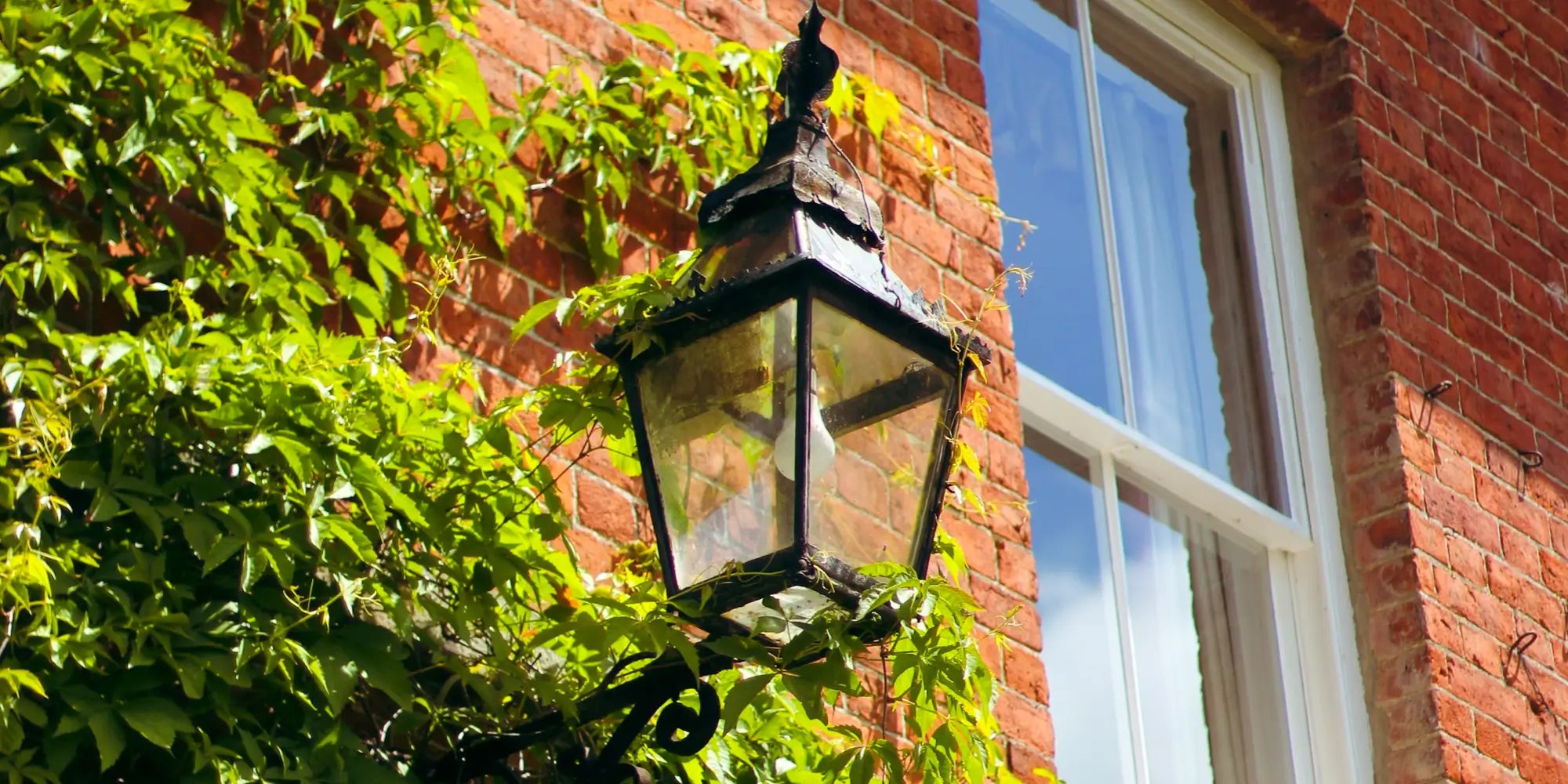
Sconces
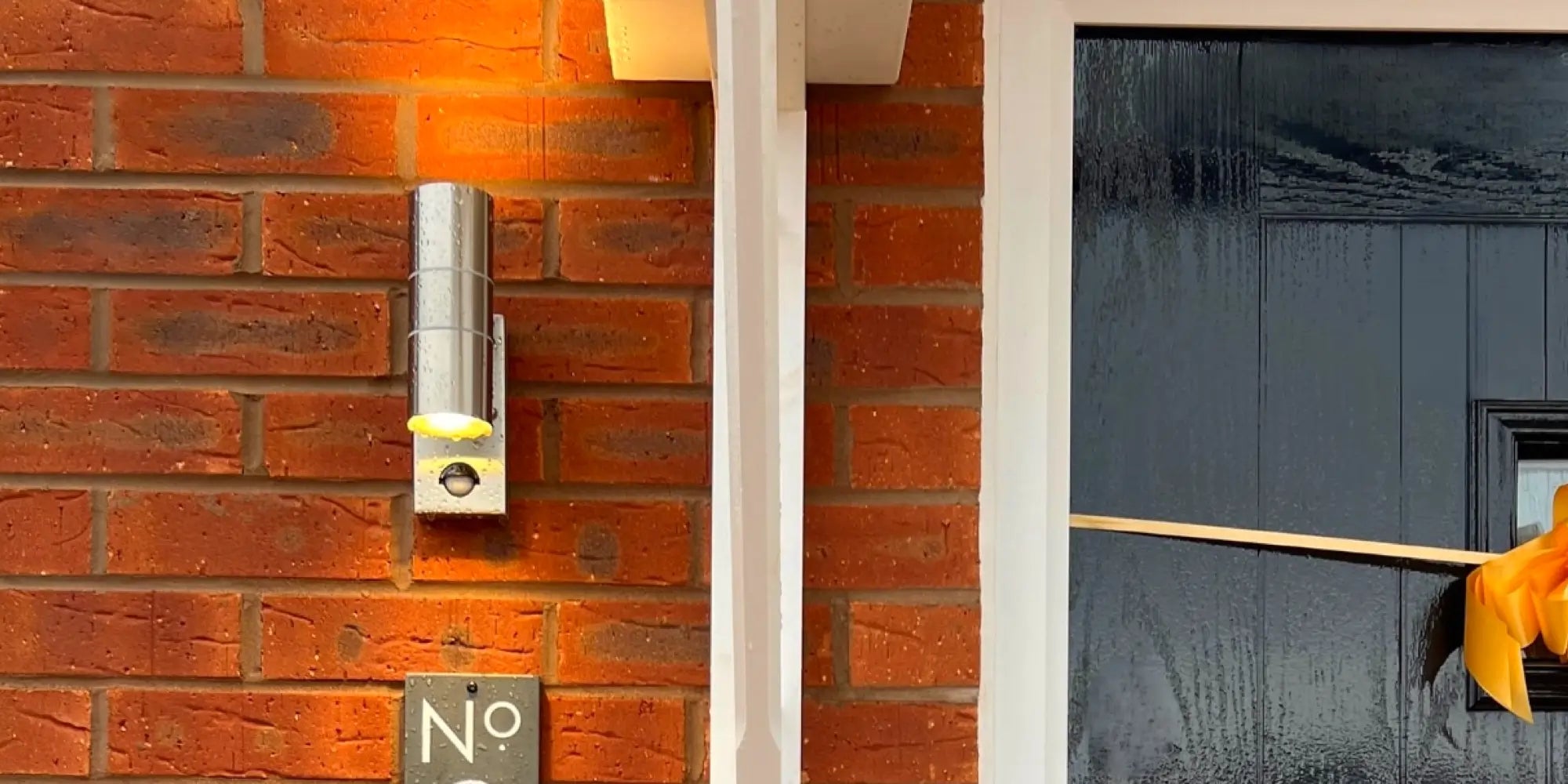
Wall Light
5. Ideal Placement for Wall Lights
Proper placement of wall lights ensures they serve their purpose effectively while enhancing the overall aesthetic. Here are some tips:
Install wall lights at a height of 152–170 cm (around eye level or slightly above).
Maintain approximately 8 ft between fixtures to ensure balanced illumination.
Avoid placing lights too close together or too far into the room to prevent overcrowding or uneven lighting.
Use fixtures on either side of doors for symmetry and added brightness.
6. Common Materials for Outdoor Wall Lights
Outdoor wall lights come in a variety of materials, each offering unique benefits. Choosing the right material ensures durability and complements your home’s style.
Stainless steel and aluminium are durable and resistant to corrosion, making them ideal for UK weather.
Clear or frosted glass adds elegance and diffuses light for a softer glow.
- Affordable and lightweight, though less durable than metal.
Many designs combine materials like metal frames with glass panels for a modern aesthetic.
7. What is the IP Rating?
IP ratings (Ingress Protection) indicate how well a light fixture resists dust and water. The first digit reflects dust resistance, while the second measures water resistance. For more details, check out our IP Rating Guide.
Suitable for light rain and general outdoor use.
Resists heavy rain and harsher weather conditions.
Waterproof, suitable for fully submerged installations.
8. Maintenance Tips for Outdoor Wall Lights
Regular Cleaning
Dust and dirt can reduce the brightness of your lights. Wipe fixtures with a damp cloth every few months.
Inspect Connections
For mains lights, secure and weatherproof wiring and connections.
Battery Replacement
For battery-operated lights, replace or recharge batteries regularly to maintain performance.
Solar Panel Care
Clean solar panels periodically to ensure maximum sunlight absorption.

9. Environmental Impact of Outdoor Lighting
Solar and LED technologies significantly reduce the environmental footprint of outdoor lighting. Solar lights use renewable energy, while LEDs consume up to 75% less electricity compared to incandescent bulbs, and can last 25 times longer. By choosing these options, homeowners can lower their carbon emissions and energy bills simultaneously.
This comprehensive guide ensures you’re equipped to make the right choice for your outdoor lighting needs. For further assistance, browse our full range or contact Outdoor Lights UK today!


